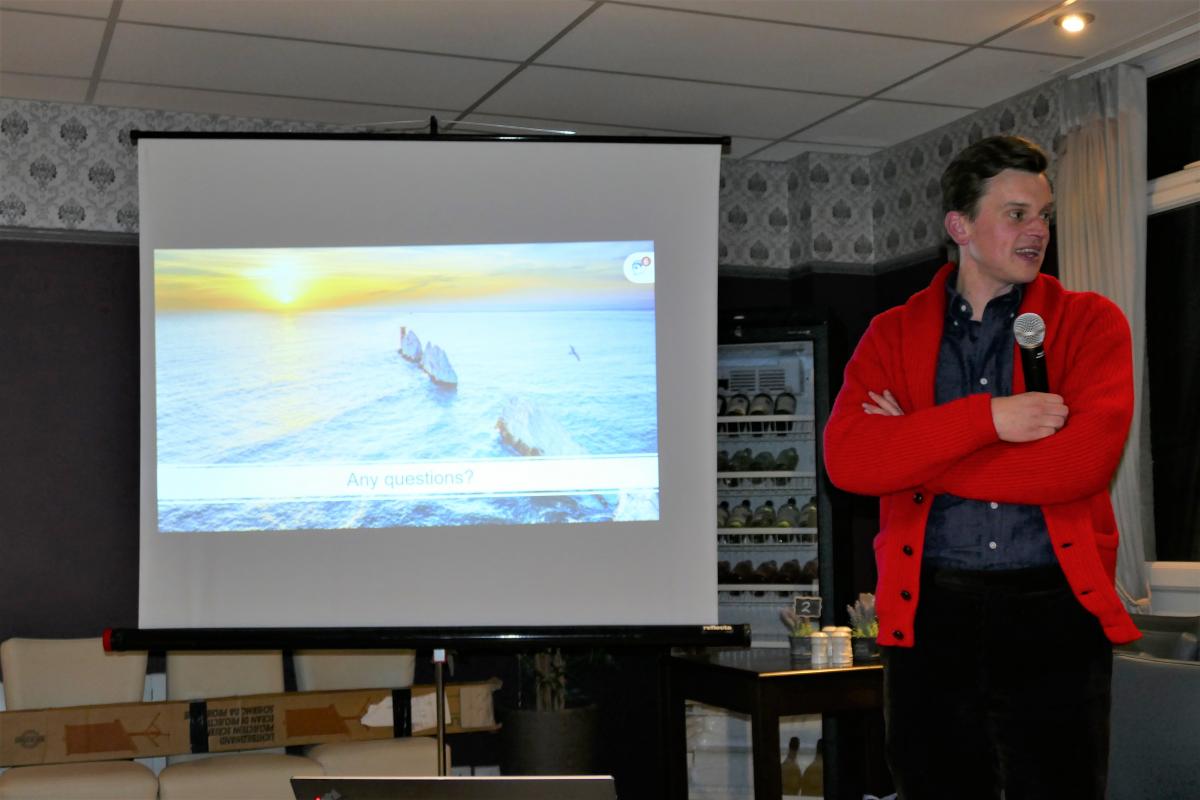Isle of Whight
Tue, Feb 28th 2023 at 5:45 pm - 7:45 pm
Arif’s son in law Jack is giving the talk.

MORPETH ROTARY ISLE OF WIGHT
The Isle of Wight was first mentioned locally by Jarrow historian the Venerable Bede in his book written in 731 'The Ecclesiastical History of the English People'. He said the island had been settled by Jutes during the Anglo-Saxon invasion. President Arif's son-in-law, Jack Shand, is from the island and gave us some interesting facts.
The locals are nicknamed 'caulkheads' as they became expert at sealing the gaps between ship and boat planks and plates in shipbuilding to make them waterproof.
The island is 370 miles south of Morpeth with an area of 150 square miles, a little smaller than Northumberland at 1936 squaremiles. Islanders are fiecely protective of their red squirrels and seegrey squirrels as a deadly enemy.
Jack's paternal grandparents are from London. Their house was bombed so they moved to a new life in the country and bought a private house to turn into a hotel. His parents moved to join them and ran a small cafe. Other well known residents were Queen Victoria and Prince Albert. The location reminded Prince Albertof the bay of Naples so they decided to buy an estate. Albertdesigned and built a new house called Osborne between 1845 and 1851, working with Buckingham Palace builder Thomas Cubitt. ASwiss cottage now in the grounds was brought in pieces fromSwitzerland, and rebuilt to educate the royal children in the activities of daily life. They were each given a plot of land nearby to plant and grow garden produce to sell to Prince Albert. For her golden jubilee Queen Victoria was gifted two Indian servants who often came to Osborne. She became very fond of one of them called Abdul Karim who she made her Indian Secretary. His elevation as a common man brought resentment from the royal household and when Victoria died, all of his letters and papers from the queen were destroyed. He was expelled to India where he died aged 47. King Charles I was a visitor but was imprisoned at Carisbrooke Castle and twice tried to escape before being taken to the mainland for trial and execution. The largest regatta in the world takes place there in August every year at Cowes. It began in 1826 and now has 1000 boats and 8000 contestants. Edward VII and his nephew Wilhelm of Germany were serious and unfiendly rivals at the event.
The Solent, the stretch of water between the island and the mainland, is where Henry VIII's flagship Mary Rose sank in 1545 when all but three sailors died. Mary Rose had been damaged earlier in a battle with the French. Henry built his navy from 4 ships to 68 in a grudge against France and Spain. The wreck was recovered in 1982. At the west end of the island are the famous Needles. Three chalk stacks that rise about 100' out of the sea. Thefourth, called 'Lot's Wife', collapsed in 1764. It is the location of the highest wind gust ever recorded in England of 122 mph. Between 1956 and 1971 a site nearby was used for rocket testing,ready for satelite launches.
The D-Day Pluto Operation ran two oil pipelines under the sea from the island to France. The island is an important location for dinosaur fossils as big as 80' long.
Getting to the island means using a ferry. There are two for cars (45 minutes), one for foot passengers (15 minutes) and there is the only commercial hovercraft ferry in the UK (9 minutes). Once at Portsmouth it is a one hour fifty minute journey to London although in the last century it was only one hour thirty three.
'What We Do' Main Pages: